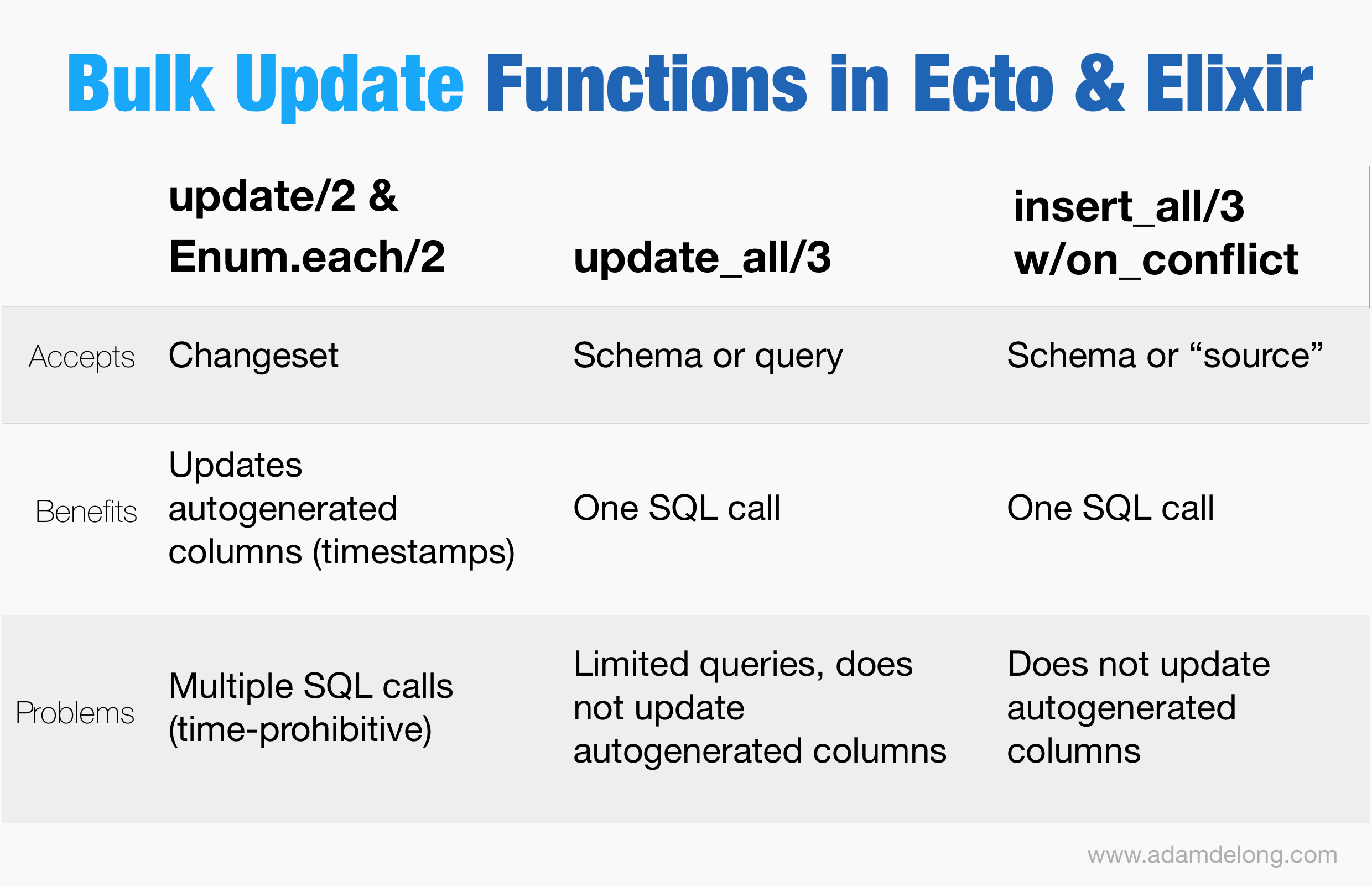
Our application will be a simple inventory system where we can add items to our inventory and also query In order to get familiar with these concepts, we’ll put together a very basic Elixir application that makes use of EctoĪnd Postgres. As such, the repository can easily delegate work to replicas when it is able to in a fairly intuitiveĪnd transparent manner. Your data model will neither know nor care where the data is being written to orįetched from. Last but not least, having a separate mechanism in place to control your database access allows you to easily support Repository pattern makes this mocking process very simple and completely pain-free. No choice but to mock out your database as it is not feasible to run a throw-away database along with your tests. While I think we are very spoiled here in the Elixir community thanks to Ecto Sandbox, there are times when you have One real world example where this is useful is when you are testing your application. As long as the repository adapter that gets swapped in adheres to the same interface,Įverything should be good to go. On data mapping and validation, and the ecto_sql library was able to focus on providing functionality for databaseĪnother thing to consider (which happens to be the focus of this article), is that your persistence layer adapter can be The ecto library was able to focus specifically Separation of the ecto and ecto_sql when Ecto 3 was released. InĪddition, the behavior of one, does not impose restrictions upon the other. The two are still able to work pleasantly together given that they share an agreed upon interface. The repository patten (in my opinion), is a very useful and pragmatic abstraction since it decouples your data from your You will be notified when new content is released! Why is the repository pattern useful?
Elixir ecto long text code#
Let’s walk through this step by step with a real world code sample:

Putting together a simple Elixir application that leverages Postgres during development. In this blog post, we’ll be talking about what exactly the repository pattern is, how it applies to Ecto, and how youĬan go about testing your Ecto backed applications without using a database. Step 2: Create migration and inventory item schema - commit.Step 1: Create a new Elixir project with Ecto boilerplate - commit.


 0 kommentar(er)
0 kommentar(er)
